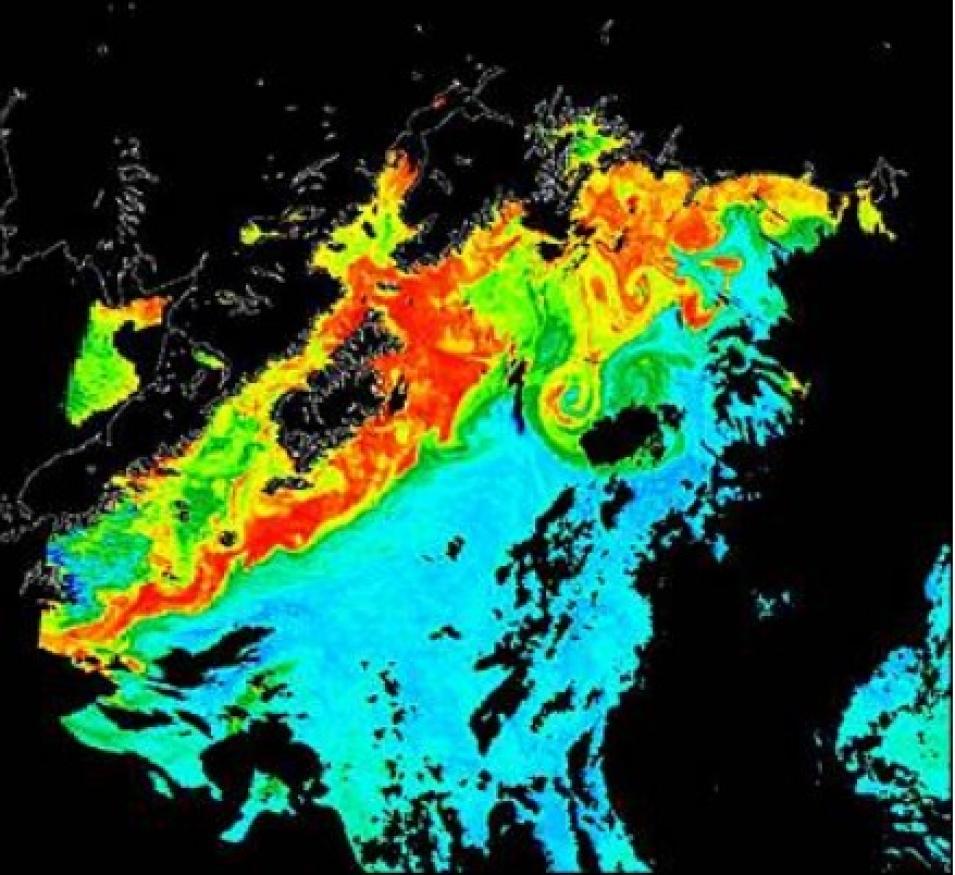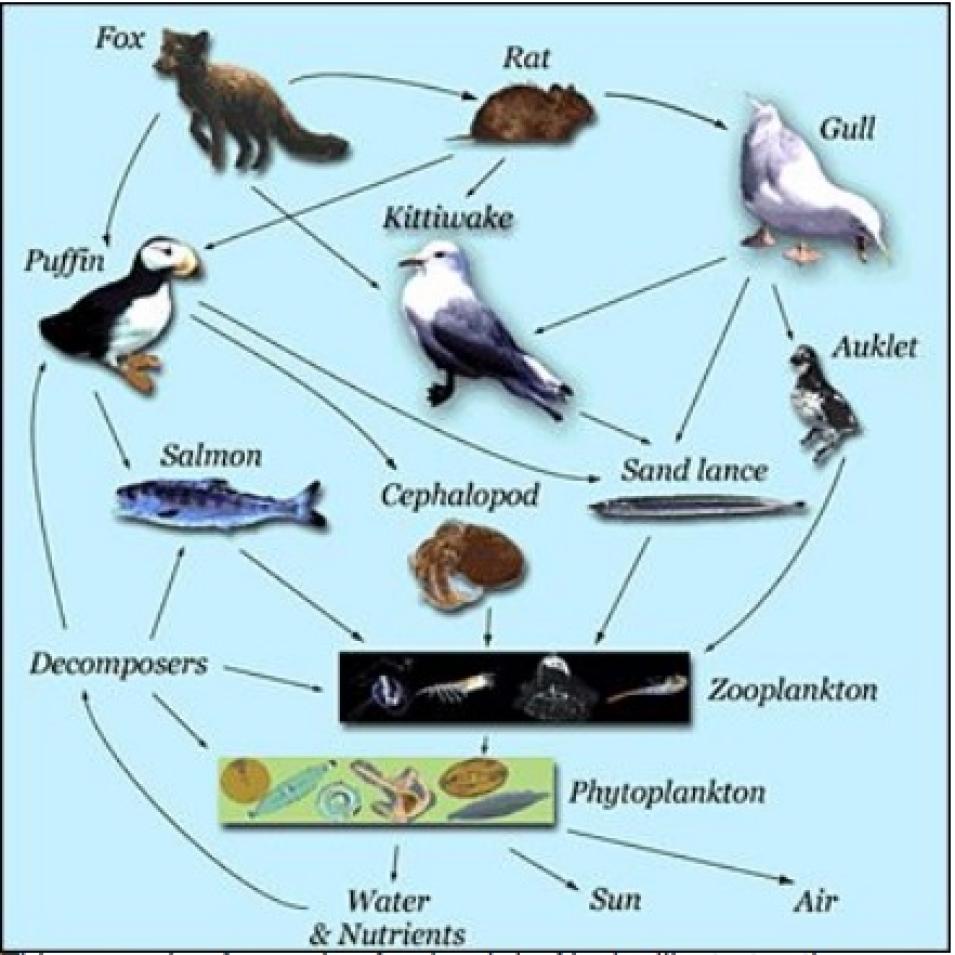Understanding phytoplankton bloom patterns and their effects on fish populations could spawn new management practices that help safeguard the future of the Alaska fishing industry. But without satellite data, Pegau and his team wouldn't be able to see an area large enough to detect any clear trends. "Kachemak Bay has 320 miles of coastline, and it's just a small dot on the Alaska map," said Pegau. "There is no way we can monitor what's happening in coastal Alaska without ocean color sensor data — SeaWiFS gives us the opportunity to see the big picture."
In the world's oceans, color varies according to the concentration of chlorophyll and other plant pigments in the water. Satellite sensors that detect these subtle changes in ocean color are critical tools for scientists studying ocean productivity. By analyzing data from SeaWiFS and MODIS, Pegau and his team discovered two patterns in the Gulf of Alaska: high chlorophyll concentrations show up in April/May, and then again in September/October. But the satellite data also show a third bloom that occurs in late June or early July.
The bloom timing is significant to both fish and birds because it determines when food sources are available. "If you're a fish getting ready for winter, then a fall bloom will provide a food source that will allow you to fatten up enough to get through the winter," Pegau said. "Conversely, if you're a bird, you want the bloom to happen just before your eggs hatch in the spring. If the bloom happens in late July, then it may be too late to be of any value to you."
But exactly what causes the blooms to occur when they do is still a mystery to oceanographers. One theory, Pegau explained, is that the timing may be related to the strength of winter storms. Like all plants, phytoplankton need light, and getting light in the ocean means being able to stay near the surface. If an area is plagued by continual storms, then the phytoplankton keep getting mixed down into deeper water - away from the light. But at the same time, they need the storms to bring nutrients up from the deep and fertilize the ocean surface. "It's a tricky balance," said Pegau. "You need enough storms to bring the nutrients up, but then you also need the storms to cease early enough to allow things to grow."
The team is also using the ocean color data to look at the spatial patterns of blooms, which are believed to have a significant effect on bird populations. "If the area that has a lot of phytoplankton is located far offshore, then the parent birds have to fly farther out to get it and, therefore, have less energy to provide for their offspring when they return," he said. "They eat up more of their food flying than they would if conditions kept the blooms closer to shore."
Having phytoplankton blooms occur far from shore poses risks not only to birds, but to salmon as well. "If food sources are located farther offshore, the juvenile salmon are forced to move away from shore to a place where they're more vulnerable to predators," said Pegau. "The farther out they have to swim to find food, the more likely they are to be taken by predators."
While many fish spend their entire lives in the ocean, other fish — such as salmon — spend a portion of their lives at sea and then return to rivers to spawn. "The ocean provides a much larger food source than the rivers and lakes where these fish are born," said Pegau. "By going out into the ocean to feed, they can grow more rapidly and reach the size and maturity that allows them to spawn. And the faster a fish can grow, the sooner it stops being prey."


